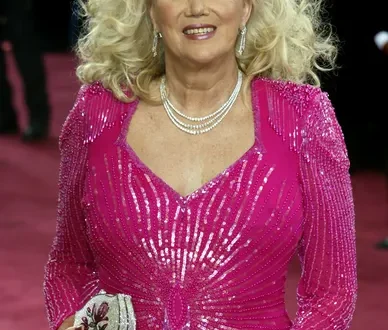Few artists in modern history have so successfully intertwined their personal lives with their creative output as Taylor Swift. Over the course of nearly two decades, she has evolved from a precocious teenager writing country songs about high school crushes into one of the most powerful cultural forces in the world. Her journey is not simply one of musical success; it is a story of reinvention, resilience, and relentless artistry, told in the verses and bridges of songs that millions have claimed as their own. At 35, Swift is no longer just a performer—she is a phenomenon whose influence extends across music, business, fashion, politics, and social identity.
Born in Reading, Pennsylvania, in December 1989, Swift’s trajectory toward stardom was evident early. By the time she was eleven, she was performing the national anthem at sporting events and begging her parents to take her to Nashville. Country music was her first calling, and she pursued it with determination that belied her age. With the support of her family, who relocated to Tennessee to nurture her ambitions, she began co-writing songs and performing at local venues. Her debut, Taylor Swift (2006), introduced her as a country ingénue with a flair for turning adolescent yearning into catchy hooks. Tracks like “Teardrops on My Guitar” and “Our Song” made her a voice for teenage girls navigating the awkwardness of young love.
Swift’s appeal, even in those early days, was her ability to universalize her personal experience. She wrote in specifics—names, places, tiny moments of heartbreak—but those details resonated because they felt authentic. She was not an unreachable celebrity figure; she was a friend sharing diary entries over a guitar. It was a formula that propelled her next albums, Fearless (2008) and Speak Now (2010), into cultural landmarks. Fearless earned her the Grammy for Album of the Year at just 20 years old, making her the youngest winner in history at that time. Songs like “Love Story” and “You Belong With Me” crossed over into pop radio, foreshadowing the shift that would soon redefine her career.
The transition from country to pop was risky, but Swift handled it with precision. Red (2012) was a hybrid project, blending Nashville sensibilities with pop experimentation. The heartbreak anthem “All Too Well” became legendary among fans for its emotional depth, while “We Are Never Ever Getting Back Together” revealed her instinct for mainstream appeal. By the time 1989 arrived in 2014, she had fully embraced pop, debuting a sleek, synth-heavy sound that dominated radio worldwide. With hits like “Shake It Off,” “Blank Space,” and “Style,” Swift reintroduced herself as not just a crossover act but as a pop powerhouse who could rival—and surpass—the genre’s established icons. 1989 was another Album of the Year winner, cementing her status as a cultural juggernaut.
But Swift’s story is not one of uninterrupted triumph. Her career has been punctuated by very public controversies—conflicts with Kanye West, feuds with Katy Perry, scrutiny over her dating life, and criticism of her image. In 2016, after a highly publicized dispute with West and Kim Kardashian, Swift found herself at the center of a social media backlash that threatened her carefully crafted persona. Many celebrities would have faltered under the weight of the scrutiny, but Swift did what she has always done: she wrote her way through it. Reputation (2017) was a dark, biting record that flipped the narrative, embracing the “snake” imagery used against her and transforming it into a symbol of survival. The record was both a defiance and a reinvention, proving that she could thrive even in hostile cultural climates.
Her resilience was again on display during her battle with Big Machine Label Group over the ownership of her masters. When her former label sold the rights to her early catalog without her input, Swift took the unprecedented step of re-recording her albums. The Taylor’s Version project not only reclaimed control over her music but also demonstrated her extraordinary relationship with her fans, who enthusiastically embraced the re-recordings as the definitive versions. It was an act of defiance that reshaped the music industry’s conversation about artist rights, ownership, and creative control.
At the same time, Swift has continued to expand her artistry. Folklore and Evermore (2020), released during the pandemic, showcased a more subdued, indie-folk sensibility. Collaborating with Aaron Dessner of The National and longtime ally Jack Antonoff, she crafted intricate, introspective albums that traded pop bombast for subtle storytelling. The records were critical triumphs, proving her versatility and further broadening her audience. Folklore won the Grammy for Album of the Year in 2021, making Swift the first woman to win that award three times.
Her latest era, marked by the record-breaking Eras Tour, has transformed her career into something even larger than pop stardom. The tour, which spans her entire discography, has become one of the most profitable and celebrated concert events of all time, drawing millions of fans across continents. Each performance is both a retrospective and a celebration of her constant evolution, with Swift shifting seamlessly between personas—the country sweetheart, the pop queen, the indie poet, the defiant survivor. For fans, the tour is less a concert than a cultural pilgrimage, an affirmation of the deep bond they share with her music.
Swift’s influence now extends well beyond her albums. She has become a figure in politics, speaking out on issues ranging from LGBTQ+ rights to voter registration. Her endorsement of Democratic candidates in Tennessee in 2018 marked her entry into political discourse, a move that sparked both praise and backlash. She has also become a force in business, negotiating record-breaking contracts, leveraging her catalog for streaming power, and proving herself a savvy operator in an industry often hostile to women asserting control.
Beyond the accolades and controversies, what sets Taylor Swift apart is her storytelling. Each album is not merely a collection of songs but a chapter in an ongoing narrative. Fans dissect her lyrics for Easter eggs, hidden meanings, and autobiographical clues, turning each release into a cultural event. Her songs have become the soundtrack of a generation, mapping the experiences of love, loss, ambition, and self-discovery with uncanny precision. She has grown up in public, and in doing so, allowed her audience to grow with her.
Today, Swift stands as one of the most awarded and influential musicians in history. She has 14 Grammy Awards, countless American Music Awards, and was named Time’s Person of the Year in 2023. Her net worth, now well into the billions, makes her one of the wealthiest entertainers alive. Yet even with such success, she continues to project relatability. Whether through candid social media posts, surprise acoustic performances, or lyrics that echo universal emotions, she maintains a connection with fans that feels personal and sincere.
As her engagement to NFL star Travis Kelce suggests, Swift’s personal life continues to fascinate the world. But unlike in her earlier years, when media scrutiny often cast her relationships as tabloid fodder, she now seems to control the narrative. Her romance with Kelce, marked by public appearances at football games and concerts, has been celebrated as a partnership of equals—two icons in different fields whose union reflects both glamour and genuine affection.
Taylor Swift’s career has been defined by reinvention, but also by consistency: an unshakable dedication to her craft, her fans, and her voice. She has shown that vulnerability can be a source of strength, that commercial dominance can coexist with artistic credibility, and that even in an era of fleeting fame, authenticity endures.
As she enters her mid-thirties, Swift is no longer merely an artist of her generation—she is shaping the culture of the 21st century. Her songs will be studied as artifacts of their time, her tours remembered as historic events, and her battles for ownership as turning points in the industry. Yet for all her success, she remains, at heart, a songwriter with a guitar and a notebook, trying to turn the chaos of life into something resembling meaning. That, more than anything, is her gift: she tells stories we recognize as our own, and in doing so, she has built not just a career but a community.




